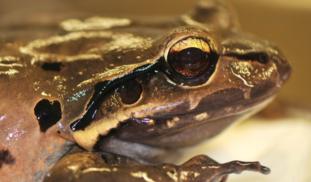Please wait...
About This Project
No project has successfully managed the impact of introduced chytrid fungus on a amphibian population in the wild. Our project targets a Critically Endangered amphibian population, that has previously been decimated by the chytrid fungus, and asks 'can environmental manipulation prove an effective method of enabling the mountain chicken frog to survive in the wild in the face of this disease?'. If successful our methods could be used to manage populations threatened by chytrid fungus globally.

Browse Other Projects on Experiment
Related Projects
How do polar bears stay healthy on the world's worst diet?
Polar bears survive almost entirely on seal fat. Yet unlike humans who eat high-fat diets, polar bears never...
Uncovering hidden insect diversity associated with a likely undescribed gall-forming midge
Does a likely undescribed species of gall-forming midge (pers. comm. Ray Gagné) on Eriodictyon plants (Yerba...
Macrofungi of the California archipelago
The eight islands of the California Archipelago are a well-studied biodiversity hotspot — but we know almost...





